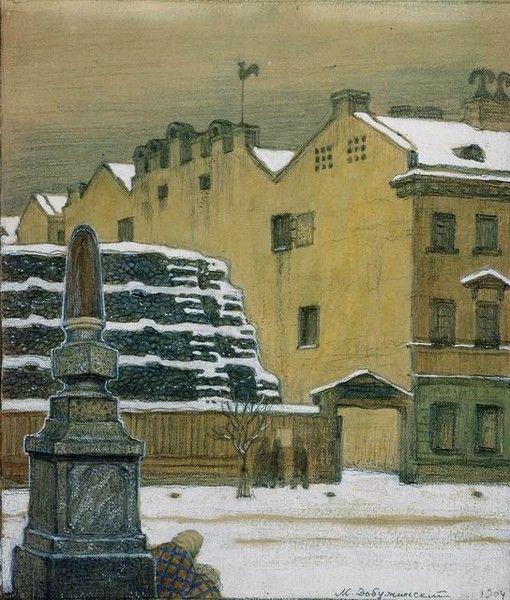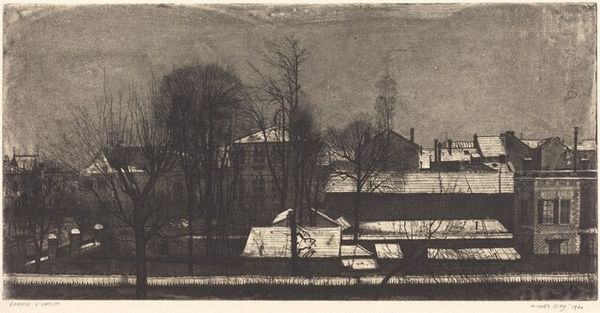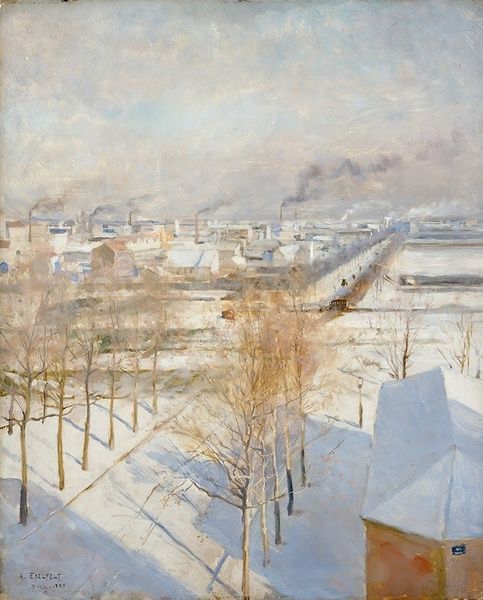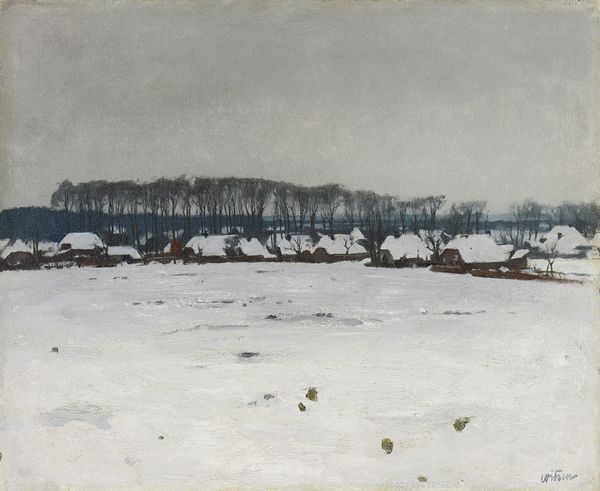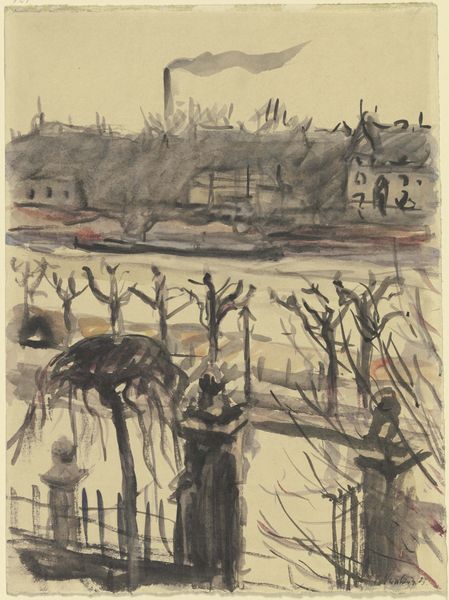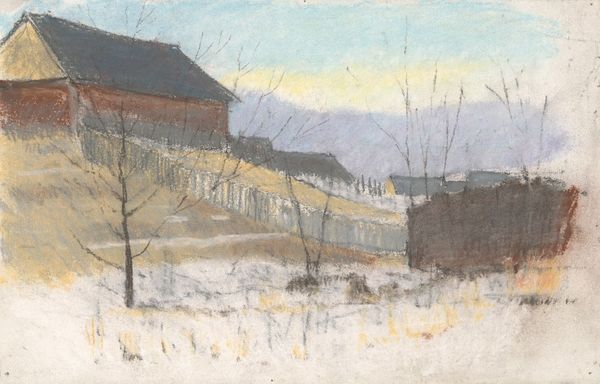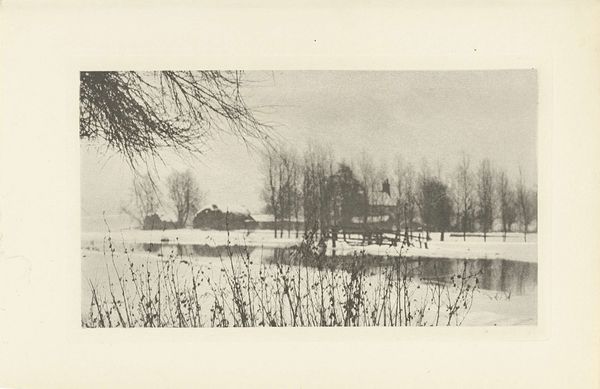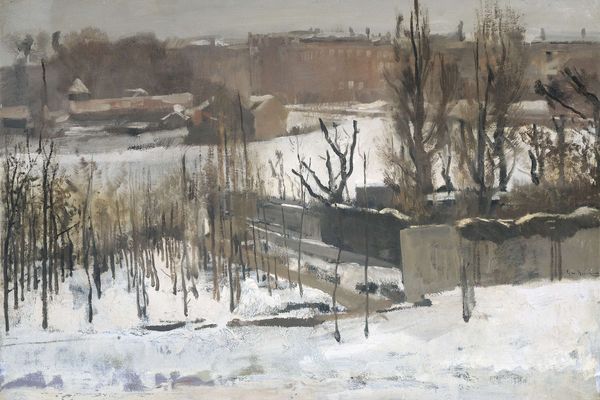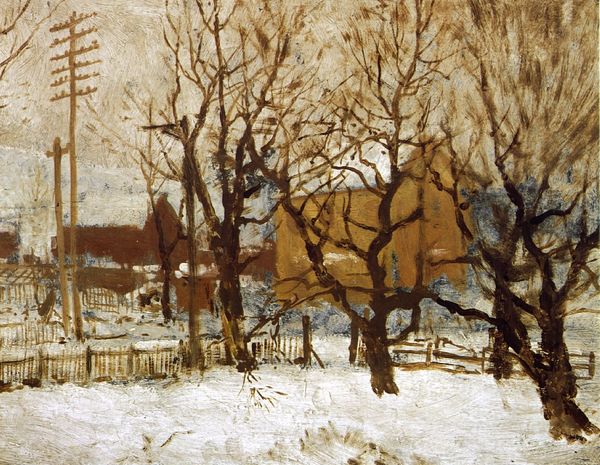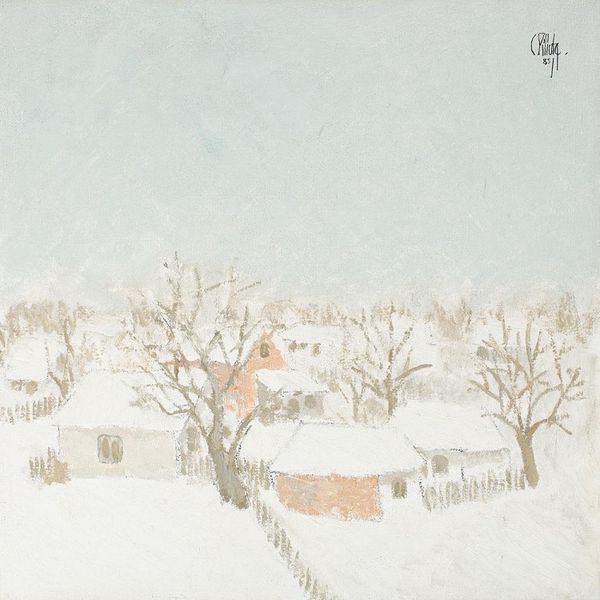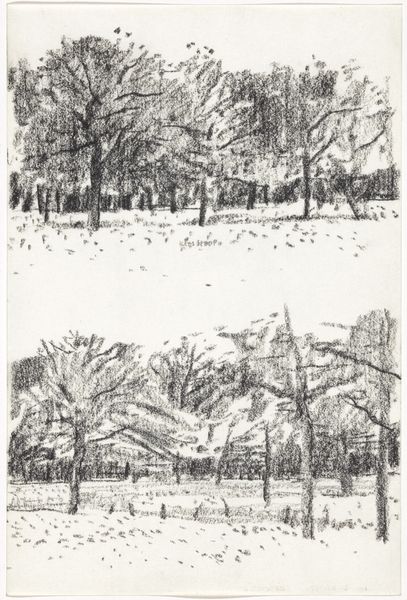
Dimensions: height 537 mm, width 710 mm
Copyright: Rijks Museum: Open Domain
Curator: Here we have Willem Witsen's "View of the Oosterpark in the Snow," likely created sometime between 1870 and 1923. Editor: It's bleakly beautiful, isn't it? The muted tones create this atmosphere of quiet isolation, and the bare trees punctuate the landscape with these somber vertical lines. Curator: Witsen was very interested in capturing the subtleties of light and atmosphere, a quality influenced by Impressionism but uniquely rendered through a Dutch sensibility. Editor: I agree. Notice the materiality. It appears to be done in watercolor, a medium that lends itself to capturing the transient nature of light and weather so characteristic of this era and area. The artist has deftly captured the weight and texture of the snow-covered scene using simple applications of tones, and the brushstrokes contribute to that mood as well. Curator: Indeed. And considering the timeframe, we can assume there would have been quite an increasing industry going on here. The city rapidly evolving around this pocket of nature and the relationship between the new wealth and old environment. It would have been very interesting observing and interacting. Editor: True. It offers an insightful study in composition and the distribution of light, yet it prompts thoughts about urban expansion and its implications. This isn’t just about what’s visually present. I feel invited to meditate on these ideas as well through Witsen's chosen color palette. Curator: I agree wholeheartedly. Also notice the artist's signature on the lower-right; It also suggests that the original owner came from a middle or higher economic background. Witsen’s works reflected that patronage a bit, although he clearly captures moments of peace away from it. Editor: Absolutely. Its simplicity speaks volumes, and that balance that reflects an awareness and appreciation for these kinds of dichotomies contributes a lot of depth in its subject. It makes me see it in a new light! Curator: And I can see that your keen observations have sparked some insights on this piece. What began for me as a view of a historical area with emerging societal tensions ends as something quite meaningful too. Thank you for pointing out a few nuances.
Comments
No comments
Be the first to comment and join the conversation on the ultimate creative platform.

